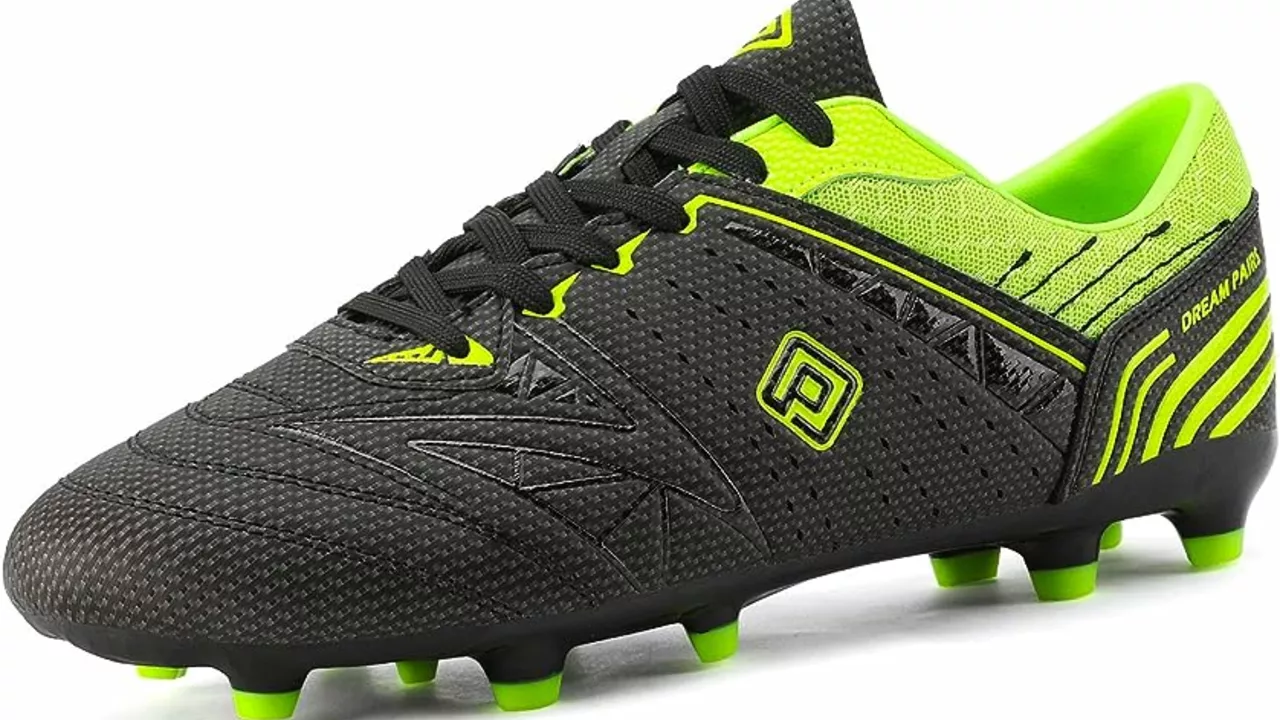
Introducing the Concept of Spikes
Oh, the humble soccer cleat. You might look at those nifty little booties and wonder, "Why on Earth do my soccer shoes need spikes, anyway?" Well dear reader, those spikes, also known as studs, may look like tiny prosthetic unicorn horns, but they're absolutely essential to the beautiful game we call football...or soccer. I'm not here to spur on the football versus soccer debate. Harmony, my better half, always says that "a rose by any other name would smell as sweet." She tends to quote Shakespeare when she's cooking, it's her quirky little habit.
You see, those spikes are there to provide something very essential to any game where you're rushing around a potentially slippery field: grip. As a wee lad growing up in Aberdeen, I remember my first experience slipping on a wet grass field because I was wearing sneakers instead of cleats. If there's one thing I can assure you, it wasn’t pleasant. Let me tell you, there's nothing quite like an abrupt introduction to the ground, in front of your school crush to make you fall for the necessity of spikes on your soccer cleats.
The Science Behind Those Pointy Little Treasures
Getting down to the nitty-gritty of soccer cleats, the spikes or studs have a more scientific explanation behind their importance. They disperse the pressure you put on your foot while running, preventing any one part of your foot from bearing an excess burden. They also come in varying shapes and lengths which actually serve a purpose - one that I, as a young lad finding his footing on the pitch, didn’t even imagine.
The longer ones grant you more grip on the field, especially useful if the ground is a bit on the wet side. Shorter spikes give better maneuverability and control, particularly handy for dribbling around defenders and showing off to your mates. This, dear reader, might be part of the reason your flashy friend Steve can dance around the field like Robbie Burns writing a love poem. As for the shape, the round ones allow for a more efficient rolling action of the foot, whereas blade-shaped studs allow for quicker starts and stops.
Deciding on the Proper Style of Spikes
So, when it comes down to deciding what style of spikes you need, be it conical or blade, long or short, it's not just a choice for ruling the school soccer league. It's about performance, comfort, and keeping yourself safely upright. As Harmony constantly stresses, "Everything has its right place, be it cooking tools in the kitchen, or spikes on your soccer shoes!"
It's also worth noting that different sports call for different kinds of studs. Rugby boots have longer studs to deal with the softer, muddier pitches typically found in the quintessentially Scottish weather, whereas cricket shoes have spikes concentrated towards the front and back. But you're here for soccer, so I won’t go down that rabbit hole. In this beautiful game, maintaining your balance while displaying dexterity is the key, and that's what you get with the spikes on soccer cleats.
Soccer Spikes and the Rules of the Game
Of course, the type of spikes you pick isn't entirely up to your personal preference. The rules of the game also dictate the studs on your boots. If you're playing in an amateur or professional league, the laws of the game clearly state that your shoes must not carry any threat of injury - to you or your opponent. This is why metal spikes are generally a no-go in soccer, unlike in baseball or cricket. So, stick to rubber or plastic, folks!
The Evolution of Soccer Cleats Spikes
Did you know that when soccer cleats first came into existence, they didn’t even have spikes on them? It’s true! They were essentially just a pair of good old-fashioned work boots. Spikes didn't make their grand entrance until the late 19th century when players began hammering pieces of leather into the soles for better grip. This accounts for why you often hear about those vintage-looking cleats 'cobbled' together, a term dating back to when shoes were made by cobblers.
Caring for Your Soccer Cleat Spikes
Here's another nugget of wisdom from Kieran - caring for your soccer cleat spikes is just as important as choosing the right kind. Proper care can extend their lifespan significantly, and who doesn’t like a good, reliable pair of cleats standing by them season after season? Simply rinsing off the dirt and letting them dry naturally after each game can make a significant difference. But remember, no aggressive scrubbing or drying them on the radiator, you don't want to cause them any damage!
In Conclusion: Ode to the Spike
As you can see, spikes aren't just fancy additions to make your soccer cleats look more formidable. They serve crucial functional purposes, from providing grip on the field to alleviating pressure on your foot. So next time you gear up for a match, I hope you look down on your spiky warriors with newfound recognition and respect. After all, without them, we'd all be doing a lot more slipping and sliding, and a lot less scoring and cheering!